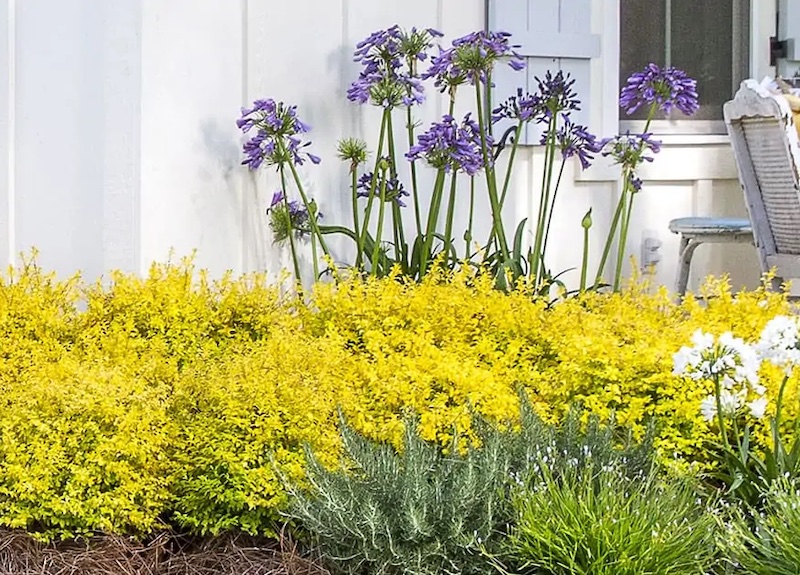Releasing the Secret to Successful Agapanthus Farming: Idea for a Flourishing Garden
In the world of horticulture, cultivating agapanthus effectively needs a strategic approach that encompasses various aspects of plant treatment. With cautious focus to information, one can unlock the secrets to supporting these spectacular blooms, resulting in a garden that prospers with elegance and vibrancy. By recognizing the nuances of agapanthus growing, one can produce an environment where these plants grow and flower perfectly. In the adhering to conversation, we will explore important suggestions and tricks that will certainly direct you towards a flourishing agapanthus garden, using insights right into finest practices, dirt conditions, sprinkling methods, and much more.
Planting Agapanthus: Best Practices
When growing Agapanthus, proper dirt prep work is necessary for making sure effective development and growth of these beautiful flowers. Agapanthus, frequently called Lily of the Nile or African lily, thrives in well-draining soil with a slightly acidic to neutral pH level - Agapanthus. Prior to growing, it is vital to change hefty clay dirts with natural issue such as garden compost or peat moss to enhance drain and provide vital nutrients for the plants
To plant Agapanthus, choose a place that receives full sunlight to partial shade, as this will certainly advertise healthy and balanced development and bountiful flowering. Dig an opening twice the diameter of the plant's origin ball and place the Agapanthus at the same depth it was formerly growing. Carefully backfill the opening with soil, pushing down firmly to eliminate any kind of air pockets around the roots.
Water the newly planted Agapanthus extensively and remain to maintain the soil uniformly damp, specifically during the plant's active expanding season. Agapanthus. Applying a balanced plant food once a month can even more support the plant's development and blooming. By adhering to these finest methods for planting Agapanthus, you can develop a stunning screen of these captivating flowers in your yard
Perfect Soil Issues for Agapanthus
For optimal development and blooming success of Agapanthus plants, ensuring the dirt conditions are ideal is important. Agapanthus favors soil that is abundant in nutrients, so incorporating a well balanced plant food during the expanding season can advertise healthy and balanced growth and dynamic blooms.

Watering and Fertilizing Tips
To make certain healthy development and dynamic blooms, correct watering and feeding methods are necessary for successful Agapanthus cultivation. Agapanthus plants benefit from regular watering, specifically throughout the expanding period.
When it concerns feeding Agapanthus, a balanced plant food with equivalent parts nitrogen, phosphorus, and potassium can be used in the spring to promote healthy and balanced growth and flowering. Slow-release plant foods are optimal for offering nutrients gradually over an extended duration. Prevent over-fertilizing, as this can lead to too much vegetation growth at the article source expense of blossoms.
Additionally, including raw material like compost right into the soil can improve nutrient levels and enhance soil framework, helping in the total health and wellness of the Agapanthus plants. By complying with these watering and fertilizing pointers, gardeners can guarantee their Agapanthus plants thrive and create magnificent screens of blossoms.
Pruning and Deadheading Methods
Correct pruning and deadheading strategies play a vital function in preserving the health and aesthetic appeals of Agapanthus plants, enhancing the vital methods of watering and feeding for successful growing. Trimming Agapanthus involves eliminating invested flower heads, dead or yellowing fallen leaves, and overall shaping of the plant to advertise far better growth. Deadheading, the process of eliminating discolored flowers, not just boosts the plant's appearance but likewise motivates more blooming.
When deadheading Agapanthus, it is a good idea to snip off the flower stem at the base utilizing sharp, tidy shears. This procedure redirects the plant's power from seed manufacturing back into root and vegetation development, promoting a healthier and a lot more durable plant. Regular deadheading can extend the flowering duration of Agapanthus and protect against self-seeding, which can lead to overcrowding.
In regards to trimming, Agapanthus normally gain you can try these out from a light trim after blooming to clean the plant and urge fresh growth. Cutting back the invested blossom stems and getting rid of any kind of dead or broken vegetation aids preserve the plant's vigor and overall appearance. However, it is important to avoid cutting right into the crown of the plant, as this can damage its health and wellness.

Protecting Agapanthus From Vermins and Diseases
Carrying out effective parasite and disease monitoring techniques is vital to safeguarding the wellness and vitality of Agapanthus plants in farming. One common bug that impacts Agapanthus is the Agapanthus borer, a caterpillar that passages right into the plant, triggering damages to the fallen leaves and blossoms.
In enhancement to parasites, Agapanthus are prone to illness such as root rot and fungal leaf spots. By remaining vigilant and addressing pest and condition concerns without delay, garden enthusiasts can aid their Agapanthus prosper and prosper.
:strip_icc()/purple-agapanthus-4637b426-ba6babc24ea34dce9361ec746f6ebc63.jpg)
Conclusion
To conclude, effective growing of agapanthus requires correct planting techniques, excellent dirt conditions, ample watering and fertilizing, regular trimming and deadheading, and security from insects and illness. By adhering to these methods and pointers, garden enthusiasts can guarantee a growing garden loaded with beautiful agapanthus flowers. Agapanthus. Keep in mind to keep constant treatment and focus to detail to advertise the health and durability of these sensational plants
When growing Agapanthus, proper soil preparation is necessary for making sure effective development and growth of these beautiful blossoms.Water the newly planted Agapanthus extensively and proceed to maintain the soil uniformly damp, particularly throughout the plant's energetic expanding period.For ideal development and flowering success of Agapanthus plants, ensuring the soil problems are ideal is essential. When growing or transplanting Agapanthus, guarantee the dirt is well-prepared to supply the needed structure for the plants to establish themselves successfully. One typical parasite that impacts Agapanthus is the Agapanthus borer, a caterpillar that tunnels right into the plant, triggering damage to the fallen leaves and blossoms.